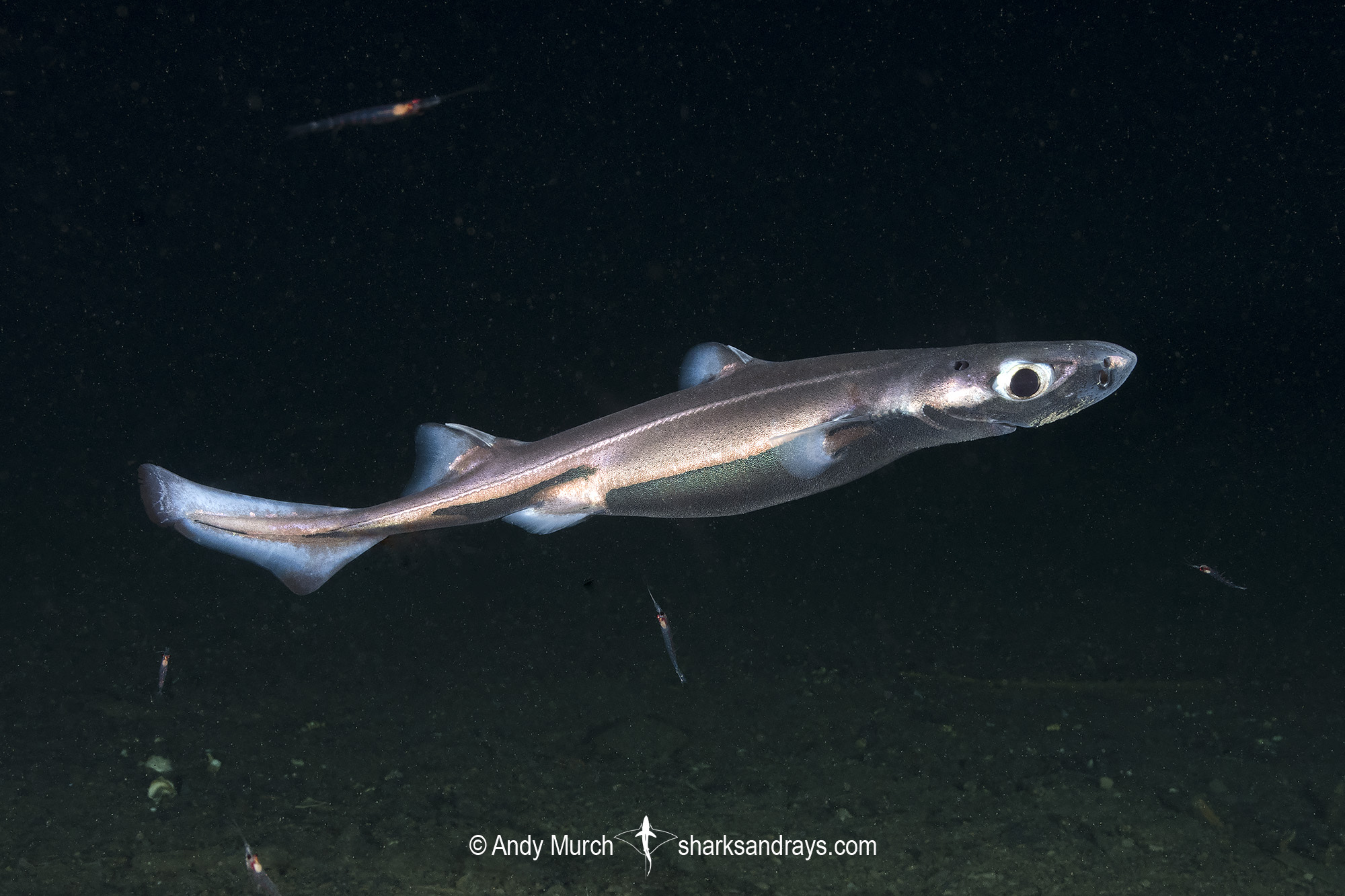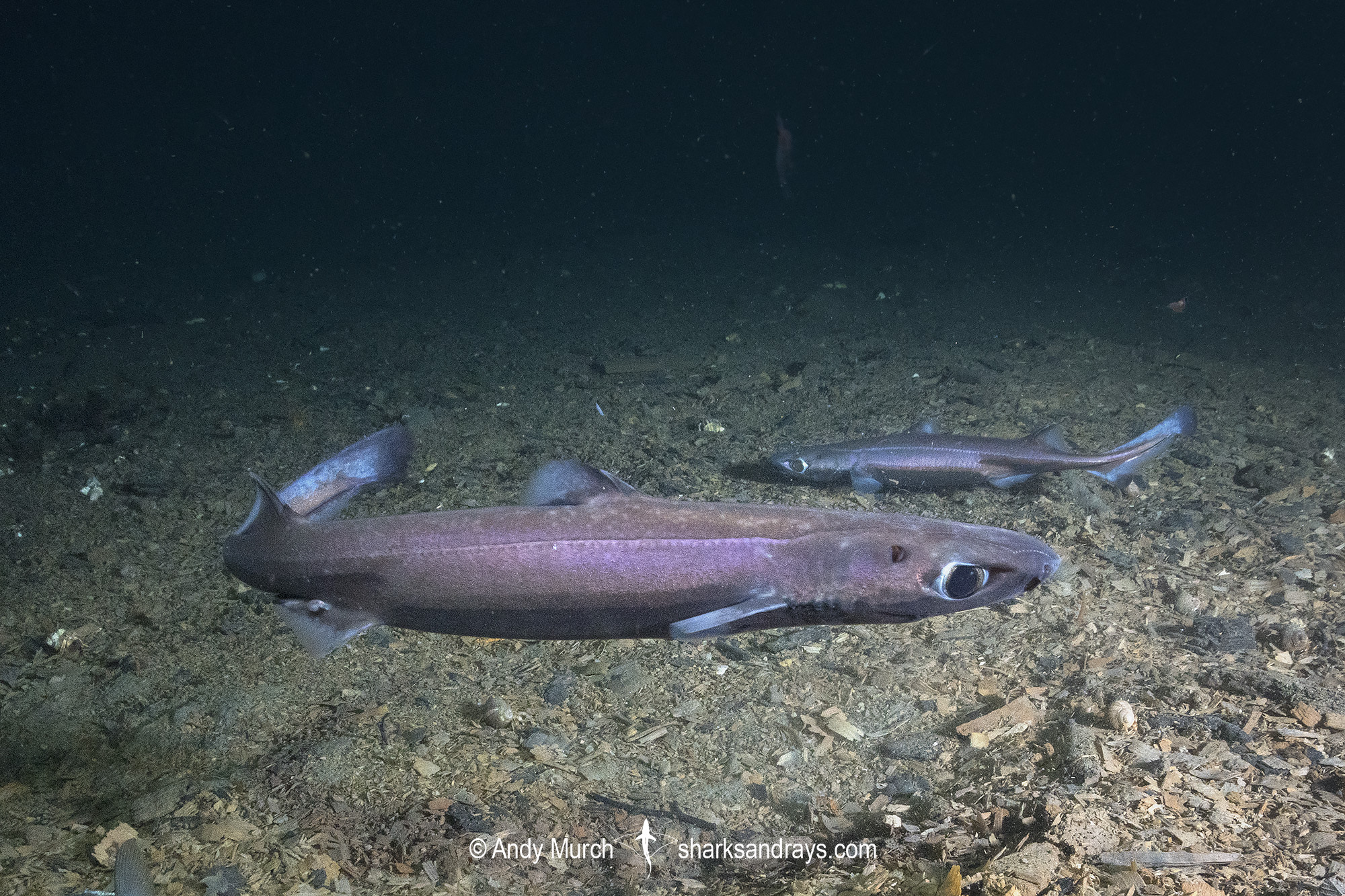Common names
Velvet Belly Lanternshark.
Binomial
Etmopterus spinax.
Synonyms
Etmopterus aculeatus, Spinax gunneri, Spinax linnei, Spinax niger, Spinax vitulinus, Squalus infernus, Squalus niger, Squalus spinax.
Identification
A small shark species with a long, bluntly rounded snout, large green-reflective eyes, and five very short gill slits. First dorsal fin small and low, with a rounded apex and an anterior fin spine that is equal to or less than half the length of the anterior dorsal margin. First dorsal origin slightly posterior to free rear tip of pectoral fins. Second dorsal approximately 2x height of first dorsal, with a pointed apex, a concave posterior margin, and a curved second dorsal fin spine that is approximately 2/3 length of second dorsal anterior fin margin. Pectoral fins small with rounded apexes and short rounded free rear tips. Pelvic fin low. No anal fin.
Dorsal coloration reddish brown or dark brown. Ventral surface covered in black photophores. Photophores may appear green under artificial lights. All fins pale near their bases, fading to black near the margins.
Size
Maximum recorded size 60cm but this species rarely exceeds 45cm.

Conservation Status
VULNERABLE
The Velvetbelly Lanternshark is a bycatch in deep-water trawl, longline, and handline fisheries in the Northeast Atlantic and Mediterranean Sea. Demersal trawl and longline vessels in West Africa probably catch this species as well. In Europe, management actions for deep-water sharks include a Total Allowable Catch for shark bycatch in longline fisheries targeting Black Scabbardfish and depth limits beyond which gillnets and demersal trawl fisheries are prohibited in some areas.
The Velvet Belly Lanternshark is estimated to have undergone a population decline of 30–49% over the past 23 years.

Habitat
Temperate continental slope. Usually demersal but sometimes well above the bottom.
Listed as occurring from 70m to 2000m but juveniles (and possibly adults) enter shallower water (35m) in Norwegian fiords where sunlight is blocked by surface runoff.
Distribution
The velvet belly lanternshark is found in the northeastern Atlantic Ocean. Common in deepwater around Norway, Iceland and the British Isles. Also present in the western Mediterranean and along the west coast of Africa as far south as Gabon.
Reproduction
Aplacental viviparous. 1-21 pups per litter.
Diet
Smaller animals mostly consume invertebrates. Larger animals also predate on small fishes.
Behavior
Behavior poorly understood. Rests on the bottom when not actively hunting.
Reaction to divers
Nonchalant around divers in baited situations.
Diving logistics
Velvet belly lanternsharks are relatively easy to attract to bait. Once they are fixated on the food, they often stay within a few meters of divers, even when caught in the beam of powerful lights.
Rarely encountered outside of Norway. Although normally found in water too deep for recreational diving, in certain Norwegian fiords e.g. Namsen Fiord and Trondheim Fiord, run-off at the surface creates a layer of silty water that significantly lowers the light level in the water below it. In these areas, velvet belly lanternsharks and other deepwater species (such as blackmouth catsharks), are found much closer to the surface than elsewhere.
Similar species
Great Lanternshark Distinguished by stouter body, shorter snout, and no obvious dark markings.
Smooth Lanternshark Distinguished by unmarked body and longer gill slits.







